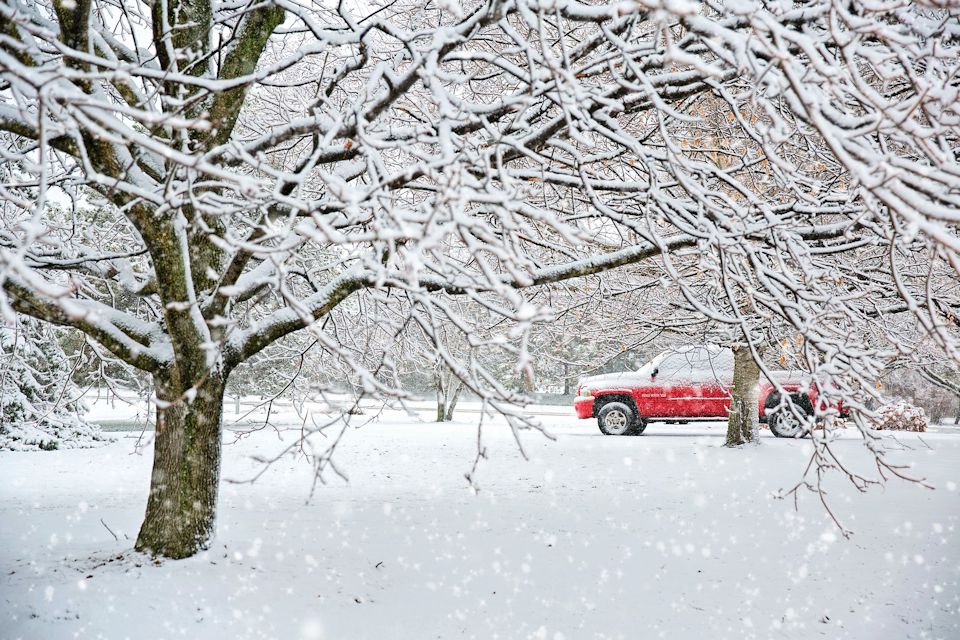Rev. Dr. Sherry Parker-Lewis describes the church’s response to COVID-19 through the lens of a book, “Leading Beyond the Blizzard.” We must seek a vision for a “post- ice age” she asserts.
SHERRY PARKER-LEWIS
United Methodist Foundation of Michigan
I can’t wait until things get back to normal.” I’ve heard this statement from several church leaders. The desire for “normal” includes a return to in-person worship, church programming, and mission projects that have been upended by the ongoing pandemic.
However, for those who are yearning for the way things have “always” been, there will be disappointment. While the mission of communities of faith will remain the same, the way churches accomplish their mission will change in the months and years ahead. The COVID-19 pandemic has pushed congregations and their leaders to consider what it looks like to offer Christ to the world in a time of social distancing and post-pandemic.
In the article “Leading Beyond the Blizzard: Why Every Organization is Now a Startup”, Andy Crouch, Kurt Keilhacker, and Dave Blanchard suggest that church leaders may find a way forward through the use of the metaphors “blizzard, winter, and ice age.”
These metaphors fit for January in Michigan. As I write, I look out over snow-covered trees, weighed down by a thin layer of ice. Church leaders across Michigan experience similar views. I ask church leaders, “Is your church in a blizzard, the season of winter, or an ice age?”
Crouch, Keilhacker, and Blanchard described the early onset of the COVID-19 pandemic as a “blizzard.” It was an emergency and churches were called on to respond quickly. In-person worship was canceled and, overnight, clergy and laity rose to the challenge of offering online worship. Meetings and classes moved to Zoom conferencing and mission efforts were redirected as needed. It was a blizzard, a crisis. We all sheltered in place, assuming that the emergency would end. The sun would come out and we’d return to what we had been doing before the storm.
And then it became clear that we were experiencing something more than a short-lived, paralyzing storm. We had entered a “winter” season. The authors write, “Winter might begin with a blizzard, but it is a season lasting months.” What do we do here in Michigan when winter comes? We prepare, we settle in and we wait for spring.
We are familiar with pulling out our snow shovels and warm boots. We put a window scraper and an extra blanket in the car. We wear more layers and make more soup. And if we see our breath in the cold air or slap our mittened hands together for warmth, we don’t mind. Spring will come again.
If we assume that our church is currently experiencing a “winter” season, then we make adjustments to stay warm and survive. It is commendable how church leaders have continued to enhance the quality of online worship, offer new ways for giving, and creatively reach out to the community. But viewing this time as a season of winter for the church can leave us with the assumption that if we just hang on, spring will come and we will go back to “normal”, doing things the way we have always done them.
It is at this point that authors Crouch, Keilhacker, and Blanchard suggest the metaphor with the greatest challenge. What if our church has not simply entered a season of winter, but has moved into an ice age? An ice age brings lasting change. The climate and the topography of the land shifts and is never the same.
In Michigan, our lands and waterways were shaped in the Pleistocene Age. Great glaciers up to 6,000 feet thick moved over Michigan carving valleys and pushing up hills. When glaciers receded, they left behind newly formed lakes and bays. If we had been alive to witness the “before and after” of the most recent ice age, we might have wrung our hands and asked, “How can we get back to normal?”
What metaphor fits best for you and your church? Are you in the midst of a blizzard, moving from crisis to crisis, making decisions in response to immediate problems? Are you experiencing a season of winter, hunkering down and working to survive until things return to normal? Or are you and your church seeking a vision for a “post-ice age”, where profound changes to the social landscape call for new approaches to offering Christ?
Change is inevitable and these pandemic-influenced months have accelerated change for the church and in society. A new landscape for ministry is taking shape.
We can be alarmed or dismayed, insisting that what we’re experiencing is just a blizzard or a hard winter. But if we’re willing to vision for an Ice age, we can anticipate the beauty and hope that change can bring.
We celebrate Michigan’s lakes and streams, forested hills, and rocky shores—beauty shaped by great glaciers. How are you and your church preparing for the new landscape of ministry to come?
~ Contact the Rev. Dr. Sherry Parker-Lewis with your thoughts. Reprinted with permission from the January 28, 2021 newsletter of the United Methodist Foundation of Michigan.
Last Updated on October 31, 2023

